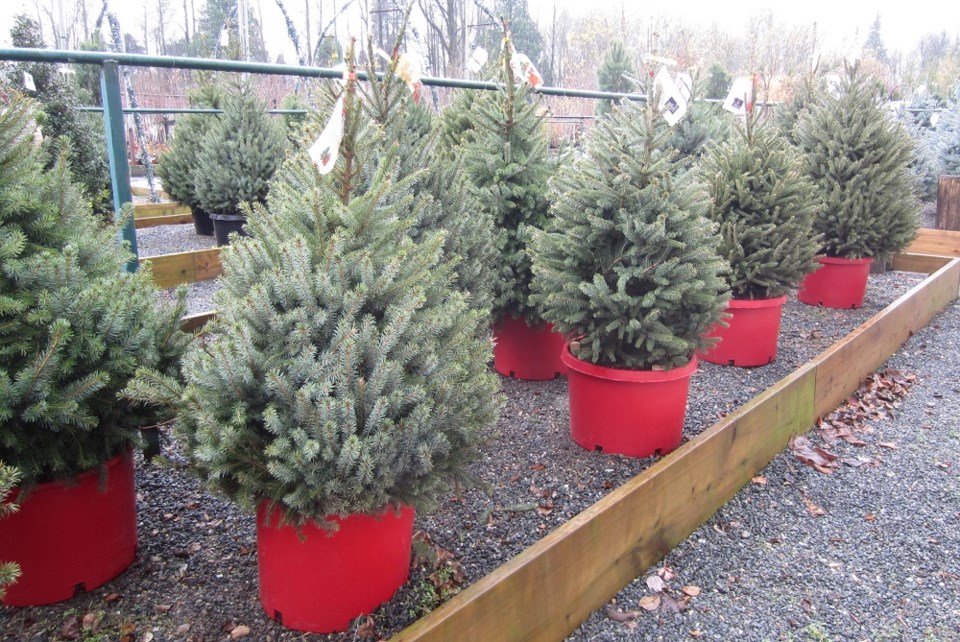The idea of a potted "living" Christmas tree is a great one, but we need to reposition our thinking.
The goal is to make sure living Christmas trees survive so we can plant them in our landscapes or simply enjoy them as a deck tree on our patios.
If you wish to bring inside a living tree to enjoy as a Christmas tree, there is a limited time frame during which it can tolerate the reduced amount of light, warmer interior temperatures and lower levels of humidity.
Usually, about a week to 10 days is the maximum time that a tree should be kept indoors. Beyond that time, next year’s growth buds tend to dry out, and the tree can become very stressed.
If, however, you can place your tree in a very cool, very well-lighted location inside your home, then you can certainly extend that time frame.
A key issue is the condition of the tree. Many living trees, especially larger ones growing in the ground, are field dug and, unless they have been root pruned, this process can be a traumatic change for them.
Unfortunately, with fewer roots able to absorb moisture and having to make a difficult transition into a less-than-desirable environment, this situation often results in the loss of the tree.
Trees that are grown in containers have a much better success rate and are more able to tolerate less-than-favourable conditions over a longer period. However, they must be watered and kept moist, just like any other indoor plant.
Most Christmas tree varieties are very hardy, and the new trend is to use them outdoors on a patio or a deck.
It’s important to position them where they can be easily enjoyed through a window. An attractive tree, decked out with LED lights, vibrant, reflective baubles and a waterproof bow, is a nice pick-me-up, day or night, all winter long.
Today, more people are deciding to leave their Christmas patio trees up year-round in order to have something living and green on their decks and for privacy and screening.
Patio trees are also a great spot to hang packages of suet for our native birds to enjoy on cold winter days.
Spruces, like the blue green Picea omorika, the dark green Norway and the newer and more compact North Pole or Montrose Charm, are some of today’s top choices for a great Christmas tree.
Blue spruces are nice looking, but many can be prickly to the touch. An Alberta spruce is tight and narrow and works well for small spaces, and the new Perfecta series is also one of the best varieties. The well-known Scotch and Austrian pines are fine, and many varieties of white pines have soft branches which are nice to touch.
Many folks are now choosing beautiful specimen trees for a more year-round landscaped look. The narrow-growing forms of Picea omorika "Bruns" and the intensely blue Picea abies "Fastigiata" are both spectacular. I also love a golden strobus pine, called Pinus "Louie," as well as a very narrow, weeping white spruce, Picea glauca "Pendula" — both make exceptional deck specimens.
At this time of the year, there is usually a great selection of living Christmas trees at most garden stores.
So, why not invest in a tree that you can enjoy for many years to come.



